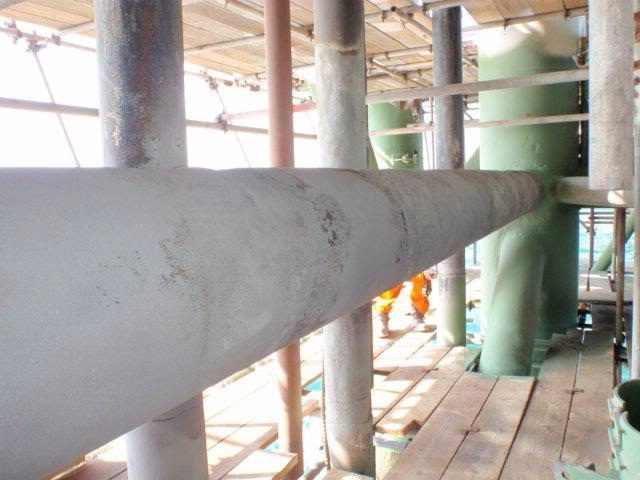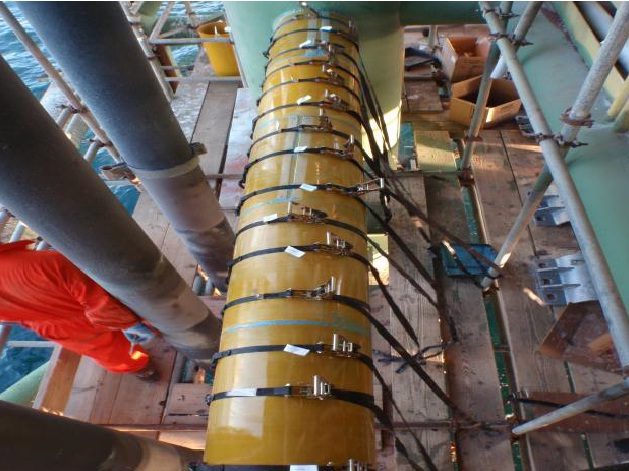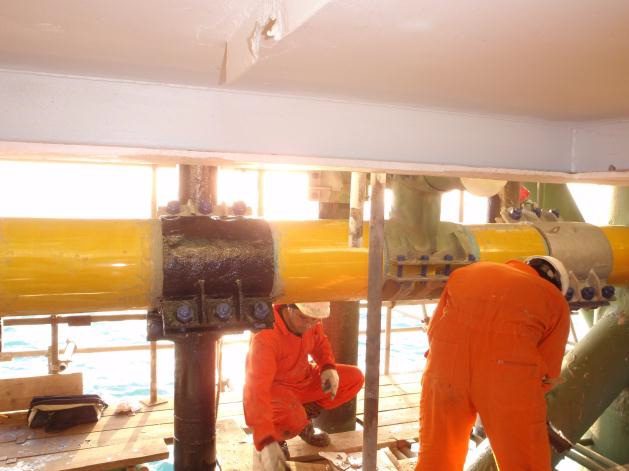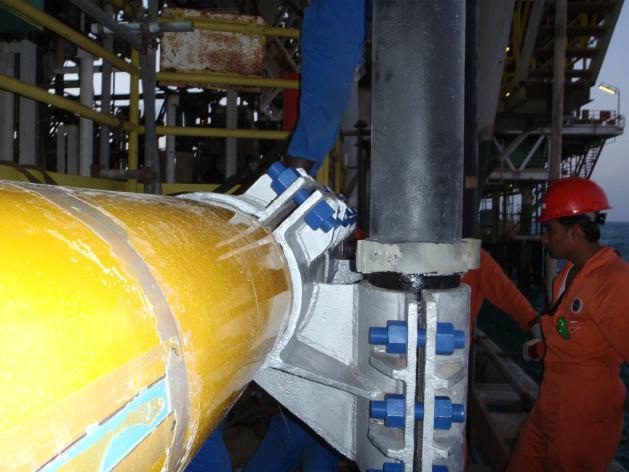MIDDLE EAST
Pipe Details
- 610-mm (14-inch) heavy wall structural cross member
- 8 m (26.25 ft) repair length
- 80% metal loss
Summary
- Extensive corrosion of several 610-mm (14-inch) heavy-wall structural cross members used to support risers
- Corrosion in some areas had reached 80% metal loss
- CSNRI trained and certified technicians carried out repairs, installing Extended SnapWrap to restore structural integrity
- Proves the viability of the Extended SnapWrap for offshore applications
Corrosion is a critical concern for offshore assets, particularly those that have been on site for extended periods of time or are nearing the end of their design life. Aware of the need to safeguard its assets and protect the environment, an operator in the Middle East was monitoring the structural integrity of its offshore production systems when it identified a problem with the riser support clamps that secure the production piping to the hull.
The 610-mm (14-inch) heavy wall structural cross member exhibited damage across a length of 8 m (26.25 ft). Severe external corrosion, which in some cases amounted to 80% metal loss on the structural member designed to hold the riser support clamps, was jeopardizing the safe execution of hydrocarbon production. The company needed a solution that could be carried out offshore in a short time frame with little disruption to its operations.


Carrying out the composite repair required the construction of an engineered heavy-wall composite sleeve, manufactured in 600 mm (24-inch) widths using bi-axial glass architecture. The specialized solution included Extended SnapWrap sleeves that would cover a longer length of pipe than the traditional repair.
A trained and certified team of installers applied extensive filler and molding to rebuild the pipe surface to the original outer diameter and installed the sleeves cut to length in a brick wall fashion.
Once the repairs were completed, the riser holding clamps were put back into service. This repair averted an incident and allowed the production platform to continue operations safely.



